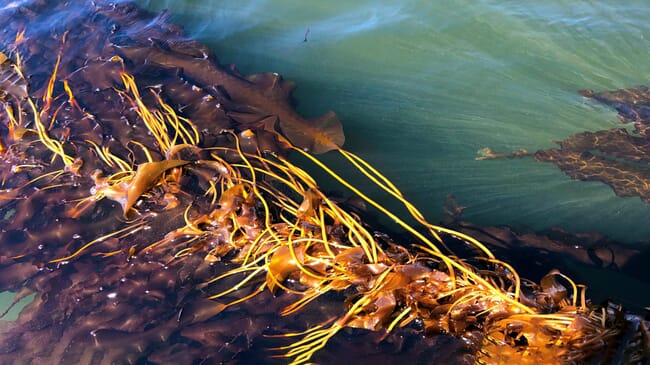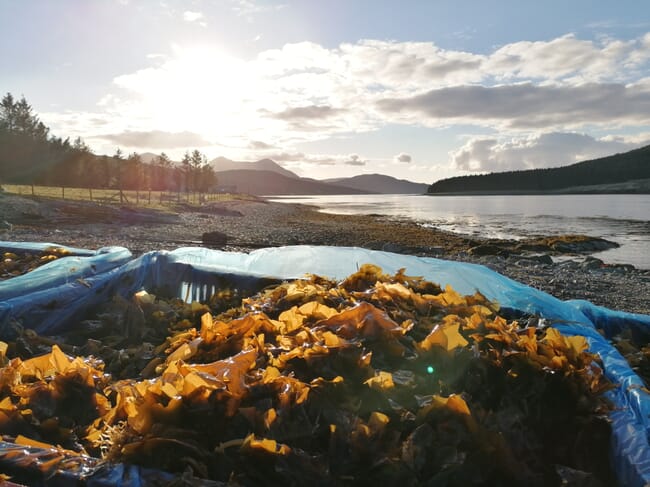
There is increasing interest in using seaweeds for food in Europe. Various companies now cultivate seaweeds and the food market drives commercial seaweed cultivation. Saccharina latissima, a brown seaweed also known as Royal Kombu, is the most cultivated species in Europe, native to the North Sea. Royal Kombu can be used for food applications and is seen as a promising source of functional food ingredients.
In the ProSeaweed project, funded by the Dutch Ministry of Agriculture, Nature and Food Quality, Wageningen University Research wanted to understand the environmental impact of cultivation and study whether the use of Royal Kombu in vegetarian burgers and as salt replacement can reduce the overall environmental impact of diets. A consortium of Wageningen University & Research, North Sea Farmers and Blonk Consultants collaborated to:
- Quantify the environmental impact of current and future Saccharina cultivation in the Dutch North Sea.
- Identify the environmental hotspots in current cultivation practice and processing when the grown Saccharina is used in vegetarian burgers and as salt replacement.

Highlights
Can the use of Saccharina latissima in vegetarian burgers and as salt replacement reduce the overall environmental impact of diets?
The inclusion of Royal Kombu in vegetarian burgers or as salt replacement reduces the environmental impact of the future diet, in particular Global Warming Potential and Land Use.
Why future diets? What needs to be developed?
With current production processes, seaweed cultivation makes a significant contribution to the environmental impact of the assessed food products. In the future cultivation scenario, with future estimated yields and more efficient infrastructure design and transport, the addition of Royal Kombu can reduce the total environmental impact of the burger and salt.
What are the environmental hotspots in current cultivation and processing of Saccharina latissima for use in vegetarian burgers and as salt replacement?
The Life Cycle Assessment points to a hotspot in the transport efforts. A reduction of environmental impacts can be achieved by more efficient means of transportation and deployment.
Are there drawbacks to the inclusion of seaweed in diets?
WUR’s Sustainability Nutrition Balance analysis shows an upper boundary for consumption of 1 burger per 7 to 8 days due to the high iodine levels in the Saccharina latissima.
A better understanding of the iodine concentration in seaweeds over time, per production location, and the right time for harvesting can minimise food safety risks. A next step is to expand the product portfolio both in product types, as well as the seaweed species included as ingredients.
How can the seaweed sector use these insights?
North Sea Farmers will use these results to help entrepreneurs understand the impact of their product and discuss possibilities for more local supplied seaweed in the near future. The results point to the need to develop efficient transportation options, together with the shipping sector.




